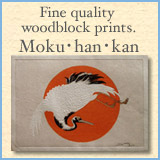Hello Cruel World
Tuesday, June 24, 2003
The anniversary of the excution of Julius & Ethel Rosenberg has just passed, and our Dr Helen Caldicott also recently was interviewed about how things are going on the nuclear side of things, which has been in the news with Iraq, new Star Wars plan, etc.
Earlier on the Matrix Essays blog I mentioned two non-Christian trinities (that word looks quite strange) in relation to the name of the character Trinity in the Matrix movie trilogy. These two were the three aspects of the Great Goddess - maid, mother, crone (which touches lightly on the Three Fates ) and Brahma, Vishnu & Shiva, the hindu Creator, Preserver & Destroyer.
Thought about Oppenheimer's quotating the Hindu scriptures on witnessing the first ever atomic explosion in the Alamogordo desert, New Mexico (July 16, 1945), a self-description of Shiva "I am become Death, destroyer of worlds".
Then I remembered the code name of that test: Trinity
Whoah!
Why did they call it this? See a review of a book on the Manhattan Project:
The Making of the Atomic Bomb, by Robert Rhodes www.epinions.com/book-review-505D-F145D1B-398E0B01-prod1
Format: Paperback - Perfect (ISBN: 0684813785)
Date Published: 08/01/1995 (published by Simon & Schuster Trade Paperbacks)
928 pages (also available on audio-cassette tape)
See maps, photos of this & other atomic tests at www.angelfire.com/tx/atomicveteran/photos.html
And also this page on the CG Jung site, where he describes a visit to the site as it is now:
www.cgjungpage.org/articles/trinityx.html
The Trinity Site
By Donald Williams, M.A., Jungian Analyst (Boulder, Colorado)
On a 'something completely different' note, wasn't there a hero in spaghetti westerns called Trinity too?
Umberto Eco said he called his book
"The Name of the Rose", because the rose had been used to stand for so many different things that it had been pretty much exhausted of meaning. We may be getting close to that for some other words too.
More Real than Real: Disneyland as Matrix
Is Disneyland The Matrix? Is TV?
Umberto Eco's book Travels in Hyperreality, discusses the typically American quest to create the "Absolute Fake," an imitation that is better than reality. (see www.transparencynow.com/eco.htm)
It is in the two Disneys, where he finds the ultimate expression of hyperreality, in which everything is brighter, larger and more entertaining than in everyday life. In comparison to Disney, he implies, reality can be disappointing. When he travels the artificial river in Disneyland, for example, he sees animatronic imitations of animals. But, on a trip down the real Mississippi, the river fails to reveal its alligators. "...You risk feeling homesick for Disneyland," he concludes, "where the wild animals don't have to be coaxed. Disneyland tells us that technology can give us more reality than nature can."
I've heard people tell stories of visiting the Smithsonian Air and Space Museum, while it was showing some models and props from the Star Trek TV shows. They were chagrined to discover that they were "more impressed" by the fake TV props than by the actual space vehicles on display nearby. As they put it, "real space ships are boring, they don't look very cool," whereas the Star Trek models were specifically created to engage the imagination.
Comments:
Post a Comment
This is my blogchalk:
Australia, New South Wales, Sydney, English, photography, reading, natural history, land use, town planning, sustainability.




